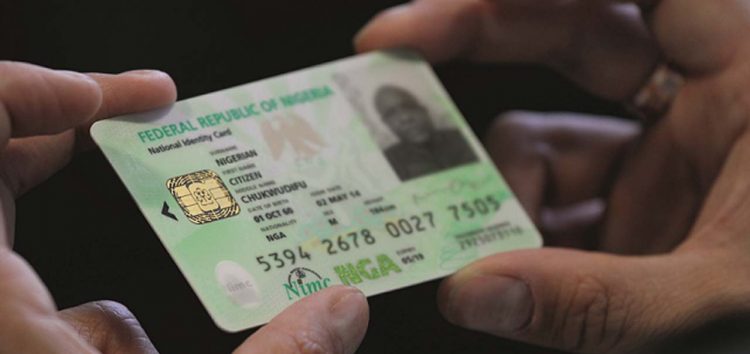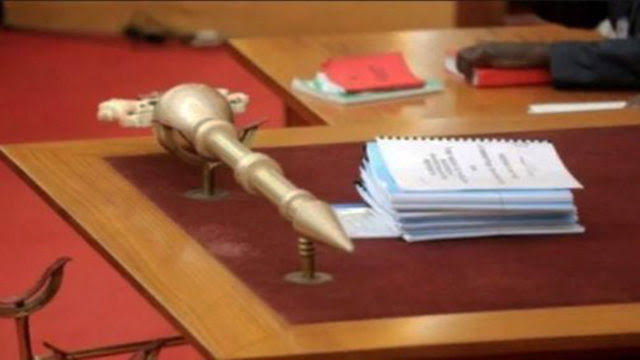10 Nigerian National Symbols [Explained]
A National Symbol is a unique object, landmark or sign recognized as representing a particular country or nation. They are often significant to the country’s history, culture, or authority. Hence, national symbols typically promotes a sense of national consciousness, identity and pride, and must be respected.
In this blog post, we have listed here ten (10) of the most unique National Symbols of Nigeria:
- National Flag
- National Anthem
- National Pledge
- The Coat of Arm
- National Flower
- National Currency (Naira)
- National Identity Card
- National Passport
- Seal of the President
- The mace.
10 National Symbols of Nigeria
Below, we’ve highlighted 10 of Nigeria’s National symbol.
1. National Flag

The Nigerian national flag was first officially hoisted on October 1, 1960, to mark Nigeria’s independence. It was designed by Michael Taiwo Akinkunmi in 1959. The flag consists of three vertical stripes of green, white, and green, with the green stripes representing Nigeria’s agricultural wealth and the white stripe representing peace and unity.
2. National Anthem

“Nigeria, we hail thee” was Nigeria’s first National anthem. It was adopted as the country’s anthem on 1 October 1960 when we gained independence. You can listen to it here. It was replaced with a new anthem – “Arise O compatriots” – was later introduced in 1978. The National Anthem was put to music by the Nigerian Police Band under the directorship of Benedict E. Odiase.
3. National Pledge

Nigeria’s national pledge is an oath of allegiance of support to the country. It is usually recited after the national anthem. Professor Felicia Adebola drafted the words in the pledge in September 1976. In the same year, General Olusegun Obasanjo decreed that all school-going children were to recite the pledge on a daily basis.
4. The Nigerian Coat Of Arm

The coat of arms of Nigeria consists of a black shield with a wavy white pall, symbolizing the meeting of the Niger and Benue Rivers at Lokoja. The black shield represents Nigeria’s fertile soil, while the two supporting horses or chargers on each side represent dignity. On the banderole around the base is Nigeria’s national motto since 1978: “Unity and Faith, Peace and Progress.”
5. National Flower

The shield’s base of the Nigerian coat of Arm depicts the Costus spectabilis, one of the most abundant wildflowers in Africa. Also known as Yellow Trumpet, Costus flower is the national flower of Nigeria. It symbolizes the beauty of the nation, its uniqueness, and prosperity.
NB: for an inexplicable reason, the flowers are painted red on the Nigerian coat of arm instead of yellow.
6. National Currency

The Naira is the National currency of Nigeria with the Central Bank of Nigeria (CBN) being its the sole issuer throughout the Federal Republic of Nigeria. The name “Naira” was coined from the word “Nigeria” by Obafemi Awolowo. However, Naira as a currency was launched by Shehu Shagari as minister of finance in 1973. It’s denomination today include: 5, 10, 20, 50, 100, 500 and 1000 naira.
7. The National Identity Card

The National Identity Card is an official document issued by the Nigerian government to its citizens and residents. The ID card usually comes with National Identification Number that’s unique to every Nigerian. It is mainly for the purpose of identification, but it is important in opening a bank account, obtaining passports, accessing government services or even sitting for an examination like WASSCE.
The National ID card is obtained through the National Identity Management Commission (NIMC).
8. National Passport

The National passport is essential for traveling abroad and are obtained through the Nigerian Immigration Service (NIS). The passport was first introduced in Nigeria, as a travel document, in 1948. It serves as a means of identification and proof of Nigerian citizenship.
With the Nigerian passport, any Nigerian can travel to any visa-free country, and can use it to obtain visa to other countries.
9. Seal Of The President

The seal of the president is the official symbol of the president of the federal republic of nigeria. It was first used in 1979 by President Shehu Shagari. The seal was then abandoned by the successive military regimes that ruled from 1983 to 1999. It was then reintroduced in the wake of the fourth republic in 1999. It has remained in use since then.
The seal represents the authority and dignity of the President. It is used on various official documents, including executive orders, proclamations and treaties.
10. The Mace

The mace is the Senate’s symbol of authority and must be present before any legitimate sitting can hold. The mace also precedes the Senate President when he arrives at the chamber which typically implies the start of plenary sessions.
It is an ornamental stick, around three feet long, and made of gold (or at least gold is one of its main components). Atop the mace sits a reproduction of the Nigerian coat of arms.
Good